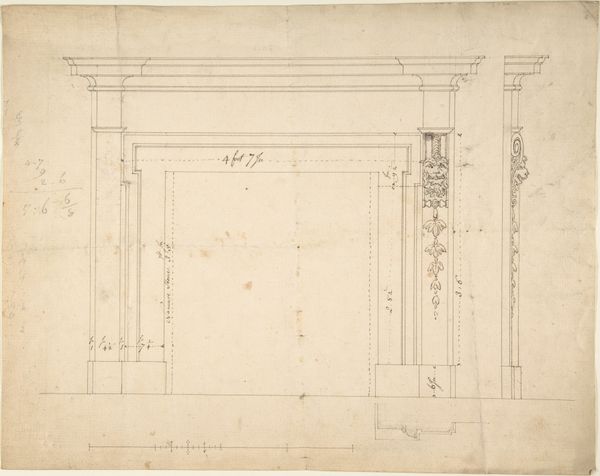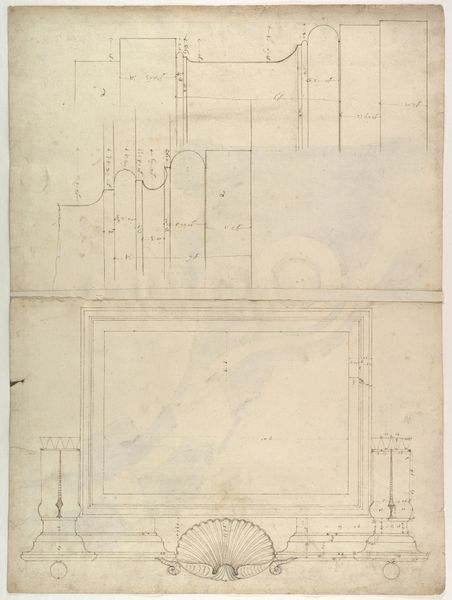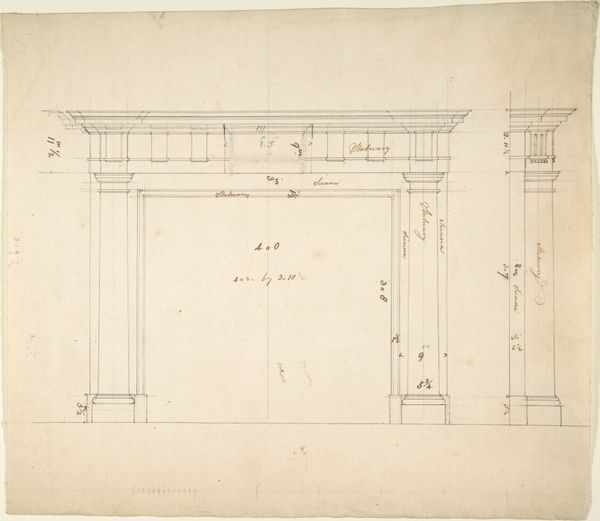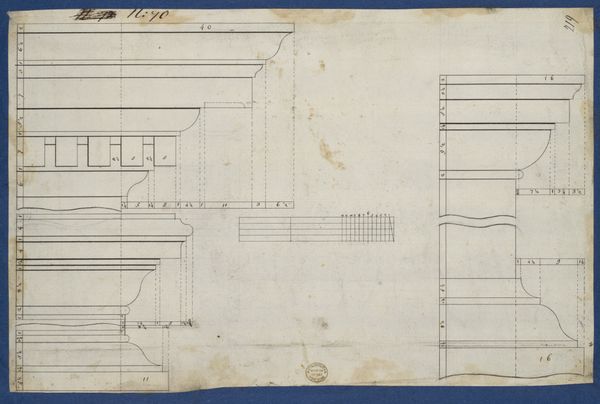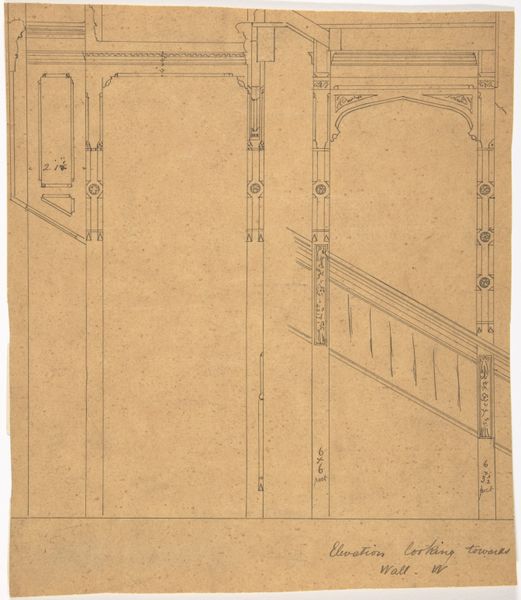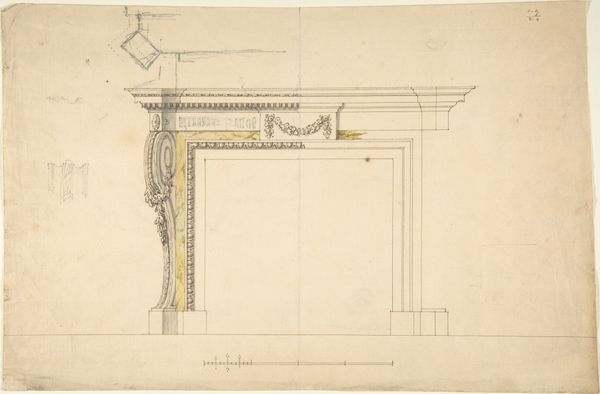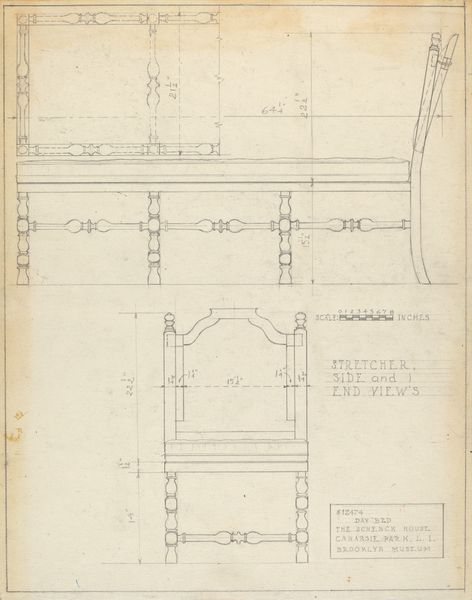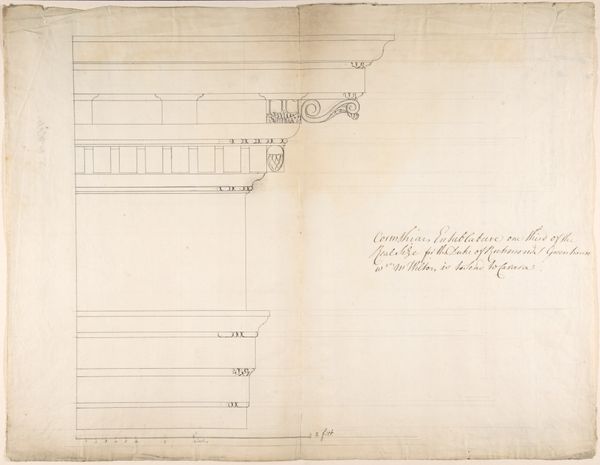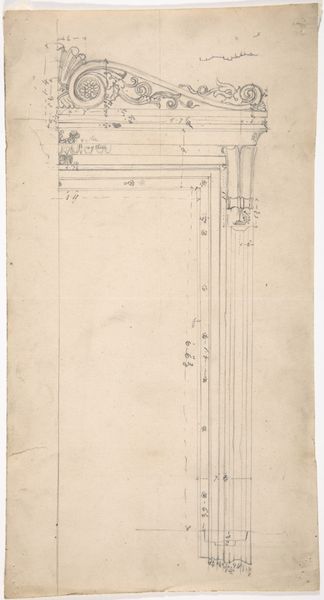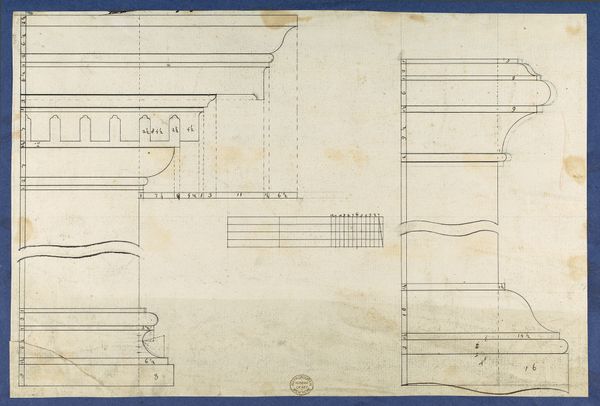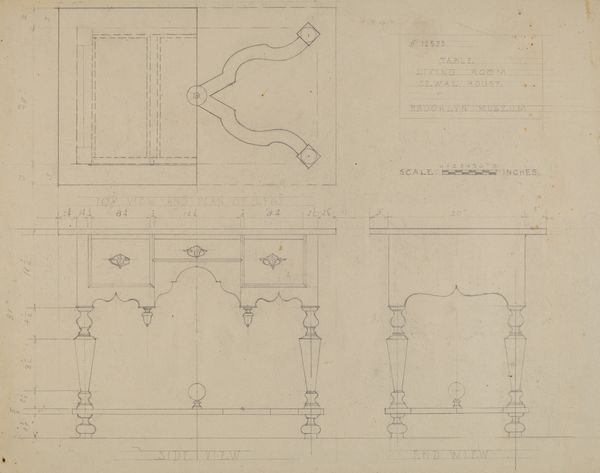
drawing, print, etching, pencil, architecture
#
drawing
#
neoclacissism
# print
#
etching
#
landscape
#
etching
#
form
#
geometric
#
pencil
#
architecture
Copyright: Public Domain
Editor: So, we're looking at Sir William Chambers' "Design for a Chimneypiece," likely created sometime between 1740 and 1800. It's a drawing, or perhaps even a print – maybe pencil and etching? It strikes me as incredibly precise and ordered. What catches your eye about this piece? Curator: As a materialist, I’m immediately drawn to the production of this image. Think about the labor involved: the paper itself, likely handmade; the pencils and etching tools, each requiring skilled artisans to create. Then, the act of drafting—the hours of meticulous work. Editor: That's a great point. I was focused on the finished product, but I hadn't considered the whole chain of production behind it. Curator: Exactly! And consider the social context. A chimneypiece wasn't just functional; it was a status symbol. The materials chosen, the complexity of the design - all signals of wealth and taste. Editor: So the very act of commissioning something like this speaks volumes about consumption and class? Curator: Precisely! And the geometric forms aren’t arbitrary. Neoclassicism drew on the aesthetics of ancient Greece and Rome, linking the patron to those historical empires. The fireplace isn’t simply a fireplace, but a declaration of belonging within a specific social and intellectual sphere. Editor: It’s like the object embodies all the social structures of its time, not just aesthetics. I’m rethinking how I see design now. Thanks for opening my eyes to the processes and history embedded within. Curator: And I’m reminded of the power even a seemingly simple drawing can have, reflecting broader networks of labor, materiality, and social ambition.
Comments
No comments
Be the first to comment and join the conversation on the ultimate creative platform.

